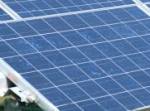The southern Australian states of Victoria and South Australia have been enduring a gruelling heat wave for over a week – and it looks set to continue for some days to come. While the sun is perceived as an enemy, solar energy could provide the solution to prevent a reoccurrence of the electricity crisis that has occurred.
The heatwave has claimed dozens of lives in South Australia. Thirteen hundred train services were cancelled in Victoria last week, severely affecting people’s ability to get to and from work. Rolling blackouts in both states have caused chaos; particularly in Victoria where over 400,000 people lost power to their homes on Friday night.
Aside from the inconvenience and potentially life threatening scenarios that occur in such blackouts, the cost to local economies can be massive.
Leader of the Victorian Opposition, Ted Baillieu ,says the estimated $100 million cost of last week’s heatwave and the resulting blackouts has tarnished the state’s reputation.
During extreme heat events, high temperatures create a double whammy for mains grid infrastructure. Equipment in the main electricity grid heats up through high ambient air temperatures and doesn’t get a chance to cool down sufficiently during the night. Add to that increased loads through the usage of appliances such as air conditioning during heatwaves and the stage is set for infrastructure to overheat, resulting in transformers failing.
With growing populations and scientists predicting that extreme heat events will increase in frequency and severity due to climate change, blackouts such as those of recent days are likely to become more frequent unless drastic action is taken.
Along with an increased focus on energy efficiency, the power of the sun can be harnessed to reduce load on an overtaxed grid through the widespread implementation of grid connected solar power systems on house and business rooftops. Government buildings and schools can also play a huge role as solar farms. In a mains grid connected solar system, solar energy is harvested and supplies power to the building where it is installed, with any excess being exported to the grid.
Each kilowatt hour generated by a grid connected solar power system is one less kilowatt hour that needs to be supplied by the mains grid.
Each house with a system has the potential to be a communal solar power farm, adding electricity to the local grid that can be used by houses in the neighbourhood, rather than that electricity needing to come from a greater distance. The further that electricity has to travel, the more is lost – it becomes heat. The more electricity running down the lines, the greater potential for heat generated failure during extreme temperatures through line loss.
While Australian homeowners are provided with some incentive to install solar energy systems through government rebates; it’s been demonstrated that in order to really stimulate demand, a gross feed in tariff is required that pays home owners and business a premium for each kilowatt hour produced by the system. Currently in Australia, feed in tariffs differ state to state and are far below what is needed to create a solar power boom in the country.
National renewable energy company Energy Matters is currently running a petition at FeedInTariff.com.au with the goal of encouraging the federal government to implement a uniform gross feed in tariff system as soon as possible. Over 5,000 Australians have signed the petition already.
While government and the pro-coal lobby may state a gross feed in tariff is expensive, it’s often forgotten that the coal industry is heavily subsidised by tax payers. Coal fired plants are not only greenhouse gas emissions intensive and contribute to climate change, they are incredibly expensive to construct. Low emissions coal is seen by some as the answer, but it’s estimated that such plants will add 50 to 75% to current power generation costs and still pose major environmental hazards through mining and coal ash waste.
Victoria’s recent $100 million loss due in part to the failure of electricity infrastructure during the heatwave certainly makes the concept of an appropriate nationalised gross feed in tariff even more attractive; not only as a solution to meeting renewable energy targets and reducing greenhouse gas emissions, but to help meet Australia’s ever growing thirst for electricity.












































